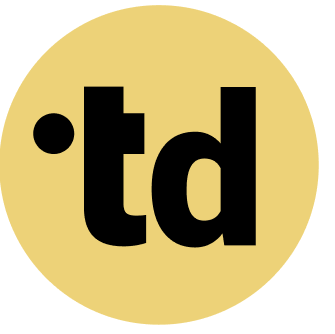Key Takeaways
Managing AI and human roles in one platform is critical for overcoming team chaos, as it boosts efficiency significantly through role clarity.
Nearly 25% of European employees suffer from burnout, a problem exacerbated by the lack of clear guidelines in the 20% of German firms using AI.
A unified platform helps increase the 30% success rate of change management projects by making hybrid team (humans and AI agents) structures transparent and adaptable.
In today's landscape, over 20% of German companies are actively using AI, yet less than half have clear guidelines for it. This gap creates friction, as a staggering 70% of change initiatives fail, often due to employee resistance. For Team Architects, the heroes tasked with conquering this chaos, the challenge is clear: build resilient, high-performing hybrid teams (humans and AI agents). This is not just about managing tasks; it's about designing a new way of working. A single platform for managing AI and human roles provides the clarity needed to reduce an overload that contributes to nearly one in four European workers feeling burnt out. It's the effective tool for delivering operational flow and strategic alignment.
Practical Framework for Team Architects
As a Team Architect, you can apply these principles to your organization:
- Map Current State: Document existing roles and responsibilities using a tool like teamdecoder.
- Identify Gaps: Where are roles unclear? Where do humans and AI agents overlap?
- Define Clear Boundaries: Specify which tasks are handled by humans vs. AI agents.
- Create Accountability: Assign clear decision rights for each role.
- Iterate and Improve: Continuously refine based on team feedback.
Acknowledge the New Chaos of Hybrid Work
The integration of AI is accelerating, with most European leaders rolling out or testing generative AI projects. This rapid pace contributes to significant employee stress, as workers worry about job disruption from a lack of AI skills. This isn't just a feeling; it has a real economic impact, with workplace stress costing the EU more than €100 billion annually. The pressure is immense, as teams with unclear roles are less effective at navigating the constant restructuring required in modern business.
This environment of constant change is a primary driver of fatigue. Research shows that nearly 25% of European workers show signs of burnout, a condition stemming from chronic, unmanaged workplace stress. For Team Architects, the challenge is to create stability amid this turbulence. A core issue is the absence of a central playbook for how human and AI roles should interact. Without it, ambiguity thrives, leading to duplicated efforts and diminished morale. The first step is recognizing that this chaos is a structural problem, not a personal one, setting the stage for a structured solution.
Build Clarity with a Unified Platform
Clarity is the most effective weapon against team chaos. Studies consistently show that teams with clearly defined roles are more efficient and a significant portion more effective. A unified platform for managing AI and human roles acts as this single source of truth. It transforms abstract reporting lines into a dynamic map of responsibilities, showing who does what and why. This is the essence of *Sweet Teams Are Made of This*-a structure where every member, human or bot, understands their contribution. You can learn more about building a hybrid team (humans and AI agents) in our guide.
This approach directly addresses the 70% failure rate of change projects by involving employees in the process. When roles are transparent, team members can see how changes align with strategic goals, reducing resistance. For example, a marketing team integrating an AI for data analysis can explicitly define the AI's role in generating reports and the human's role in interpreting those reports for strategic decisions. This simple act of definition on a shared platform prevents overlap and empowers both human and AI agents to perform optimally. This clarity provides the foundation for more advanced organizational development.
Architect Insight: Design Your Hybrid Team Structure
For Team Architects, designing effective hybrid teams requires a new mindset. The EU AI Act reinforces the importance of a 'human in control' principle, which should be a cornerstone of your design. This means structuring workflows where AI augments human capabilities, not just replaces them. A unified platform is where you model these interactions, ensuring every process has clear ownership and oversight. Explore our tools for modeling roles to get started.
Our Playful Tip: Start by mapping critical tasks and desired outcomes before assigning them to roles. This outcome-driven approach ensures your team structure directly supports your business goals. Here is a checklist for architects:
- Define the scope of AI agents: Clearly list the specific tasks an AI will handle, such as data collection or initial analysis.
- Map human oversight: For every AI-driven task, assign a human role responsible for validation and final decision-making.
- Clarify handoff points: Detail the exact triggers and protocols for when a task moves from an AI to a human, or vice-versa.
- Establish communication protocols: Determine how AI agents will report status and exceptions to their human counterparts.
- Set performance metrics: Create distinct KPIs for both human and AI roles to measure their contribution to team goals.
Deep Dive: Use the platform to run simulations of new workflows. By modeling changes before implementation, you can identify potential bottlenecks and reduce the risk of disruption, increasing your change management success rate from a mere 30%. This proactive approach to designing workflows is key to building resilient team structures.
Achieve Operational Flow and Slash Friction
When roles are clear, teams just have more fun-or at least, they experience significantly less friction. A platform that visualizes roles and responsibilities eliminates the daily guesswork that saps energy. Instead of wondering who to ask or what to do next, team members can see the entire workflow. This transparency is proven to make teams some more effective in their execution. It allows for faster, more autonomous decision-making at the individual level because the boundaries of authority are clear.
This clarity is critical in hybrid teams, where handoffs between people and AI are common For instance, a customer service bot might handle initial queries for most incoming requests, but its role definition clearly states it must escalate complex emotional issues to a human agent immediately.. This seamless handoff, defined and managed in a central platform, prevents customer frustration and empowers the human agent to focus on high-value interactions. You can try teamdecoder for free to see how it works. This is how you optimize task allocation and achieve operational excellence.
Scale Your Operations with a Unified Playbook
For startups and scaling companies, establishing clear roles from day one is a competitive advantage. A unified platform for managing human and AI roles provides a blueprint for growth, ensuring that as you add new team members-whether human or digital-they plug into a coherent structure. This prevents the operational debt that accumulates when roles are defined ad-hoc in spreadsheets. This is how you *Make Bots and Humans Click* for sustainable growth. See our pricing to find a plan that fits your stage.
A clear, scalable role architecture allows you to operationalize strategy quickly and efficiently. For a startup aiming to expand into a new market, this means you can model the necessary sales, marketing, and support roles-including AI agents for lead scoring-before you even make the first hire The benefits are immediate:
- Faster Onboarding: New hires understand their responsibilities and collaborators from their first day, reducing ramp-up time by up to a significant portion..
- Improved Resource Allocation: Leaders can see exactly where human and AI resources are deployed, preventing over- or under-staffing in critical functions.
- Consistent Governance: A single platform ensures that as you scale, your approach to hybrid team governance remains consistent and compliant.
- Enhanced Agility: When a market shift requires a pivot, you can rapidly redesign and redeploy your team structures with minimal disruption.
This structured approach to scaling is essential for building a resilient organization ready for future challenges, including further hybrid team integration.
Transform Your Team from Overload to Ownership
The journey from chaos to clarity transforms the employee experience. It shifts the dynamic from feeling overwhelmed by endless tasks to taking ownership of well-defined responsibilities. This is the ultimate benefit of managing AI and human roles in one platform. It addresses the root causes of burnout-lack of control and unclear expectations-which affects nearly one in four workers. By providing a clear framework, you empower your team to focus, collaborate, and innovate.
Ultimately, this is about more than just organizational charts; it's about building a resilient, future-ready workforce With many new job roles in Europe expected to be directly enabled by AI by 2030, the ability to architect and manage hybrid teams is no longer optional.. It is the core competency of modern leadership. By embracing a unified platform, Team Architects can lead their heroes-their teams-to conquer complexity and achieve sustained performance.
Try teamdecoder for free - shape your team and make change feel like play!
More Links
Institut der deutschen Wirtschaft (IW Köln) offers a study on trends, likely concerning the German economy, potentially including aspects related to labor and technological advancements like AI.
Statista provides statistics and data on the topic of AI in the workplace in Germany.
German Federal Statistical Office (Destatis) presents a press release likely containing statistical information relevant to the German economy or society, with recent data given its date.
Federal Institute for Vocational Education and Training (BIBB) discusses the impact of AI and digitalization on vocational training and skills development in Germany.
Fraunhofer IAO offers a scenario report focusing on the future of work and the impact of digital technologies, including AI, on various industries and job roles.
Ingenieur.de features an article discussing the collaboration between humans and AI, suggesting that optimal results are achieved when they work together.
University of Witten/Herdecke describes research being conducted on the collaboration between humans and AI.
German Federal Ministry of Labour and Social Affairs (BMAS) publishes an article from its 'Denkfabrik' (think tank) discussing the future of work in Germany and how the country is setting standards in AI.
PwC Germany discusses building an organization for artificial intelligence excellence, focusing on responsible AI practices.
Wikipedia provides a general overview of the impact of artificial intelligence on the workplace.
FAQ
How does teamdecoder help with AI agent integration?
teamdecoder allows you to define AI agents as distinct roles within your team structure. You can map out their specific tasks, decision-making rules, and the exact points where they hand off work to human colleagues, creating a clear and manageable workflow for your entire hybrid team (humans and AI agents).
Can I use teamdecoder for restructuring my existing team?
Yes, teamdecoder is an ideal tool for restructuring. It allows you to model new team structures, clarify new roles and responsibilities, and communicate these changes clearly to Many people involved. This transparency helps reduce the resistance that causes 70% of change initiatives to fail.
Is this platform suitable for a small startup?
Absolutely. Startups can use teamdecoder to establish a strong organizational foundation from day one. Defining roles early prevents confusion as the team grows, making it easier to scale, onboard new employees, and maintain operational efficiency. We offer a free plan perfect for teams with five or fewer employees.
How does your platform support change management?
Our platform supports change management by providing a visual and collaborative space to design and communicate organizational changes. By making the new structure and roles transparent, you can build buy-in from your team and reduce the uncertainty and resistance that often accompany transformation.
What kind of templates do you offer?
teamdecoder offers a variety of templates for different team structures and initiatives, including templates for task forces, scaling startups, and integrating AI agents. We also provide specialized templates for DEI, sustainability, and customer-centricity to help you build a well-rounded and effective organization.
How do I get started with teamdecoder?
You can get started by signing up for a free account on our website. This will give you immediate access to our platform, where you can begin mapping your team structure, defining roles, and exploring our features. See our pricing page for more details on our different plans.





